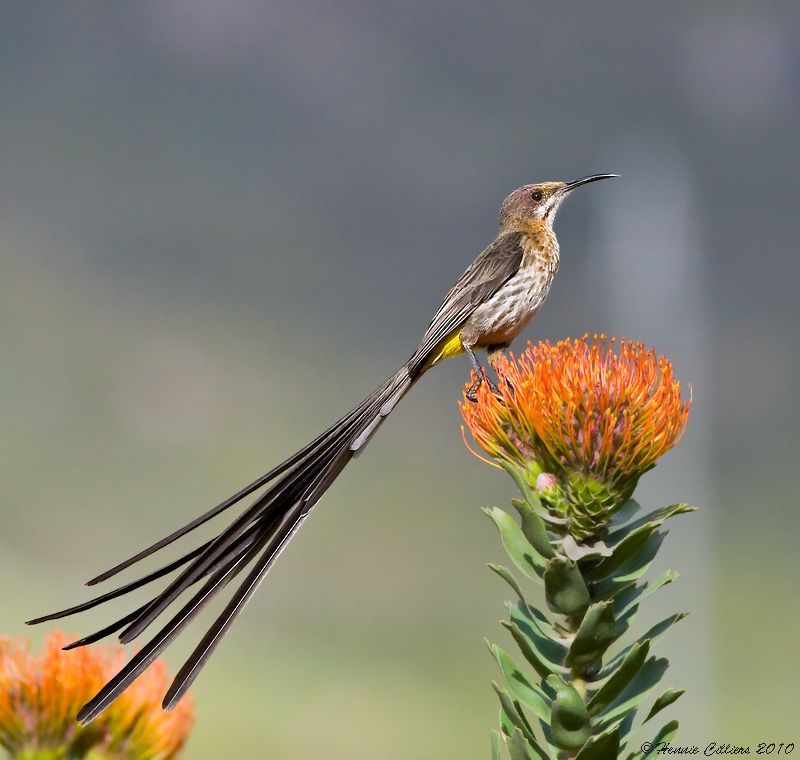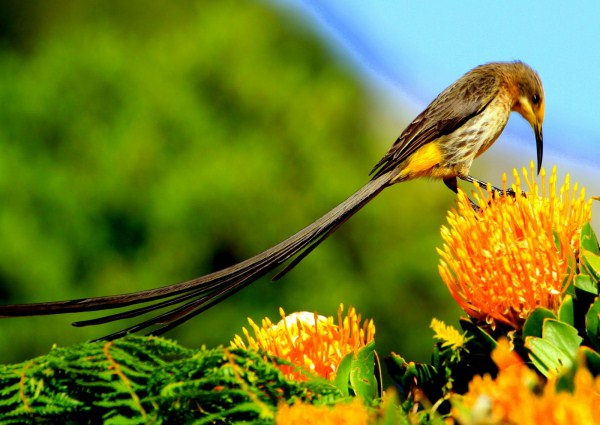
Promerops cafer
TAXONOMY
Merops cafer Linnaeus, 1758, Cape of Good Hope, South Africa.
OTHER COMMON NAMES
English: Sugarbird; French: Promйrops du cap; German: Kaphonigfresser;
Spanish: Pбjaro Azъcar de el Cabo.
PHYSICAL CHARACTERISTICS
Females 9.5–11.5 in (24–29 cm), males 14.5–17 in (37–44 cm),
including long tail; 1.5 oz (42 g). Rufous head and breast. Distinctive
long bill and long, brownish tail feathers. Chin is white
with a moustachial dark streak. Abdomen is whitish, vent yellow.
DISTRIBUTION
South Cape Province, South Africa.
HABITAT
Fynbos (coastal heathland).
BEHAVIOR
Single or paired, sometimes in small flocks. Males in breeding
season perform aerial displays in which wings are clapped together
and tail is held high. Both sexes defend flowering
bushes from other sugarbirds and sunbirds. Song is a sustained
jumble of discordant notes. Emit harsh alarm call of chicks and
clatters. Show local and altitudinal movements in response to
flowering of proteas.
FEEDING ECOLOGY AND DIET
Forage on nectar, especially of Proteaceae, and on insects captured
in flight or gleaned from plants.
REPRODUCTIVE BIOLOGY
Breed from February to August, but varies with local timing of
flowering. The deep cup-shaped nest is placed in a bush or low
tree and is made from grass and twigs and lined with plant
down. Lay two buff to reddish brown eggs with brown spots,
streaks, and blotches.
CONSERVATION STATUS
Not threatened.
SIGNIFICANCE TO HUMANS
None known.
Other popular Animals
Photo Gallery of - Cape sugarbird




 Animalia Life
Animalia Life